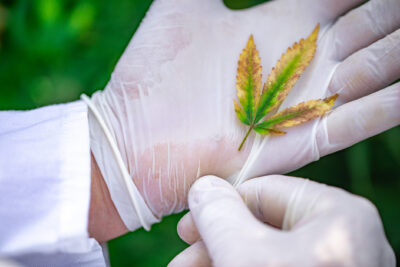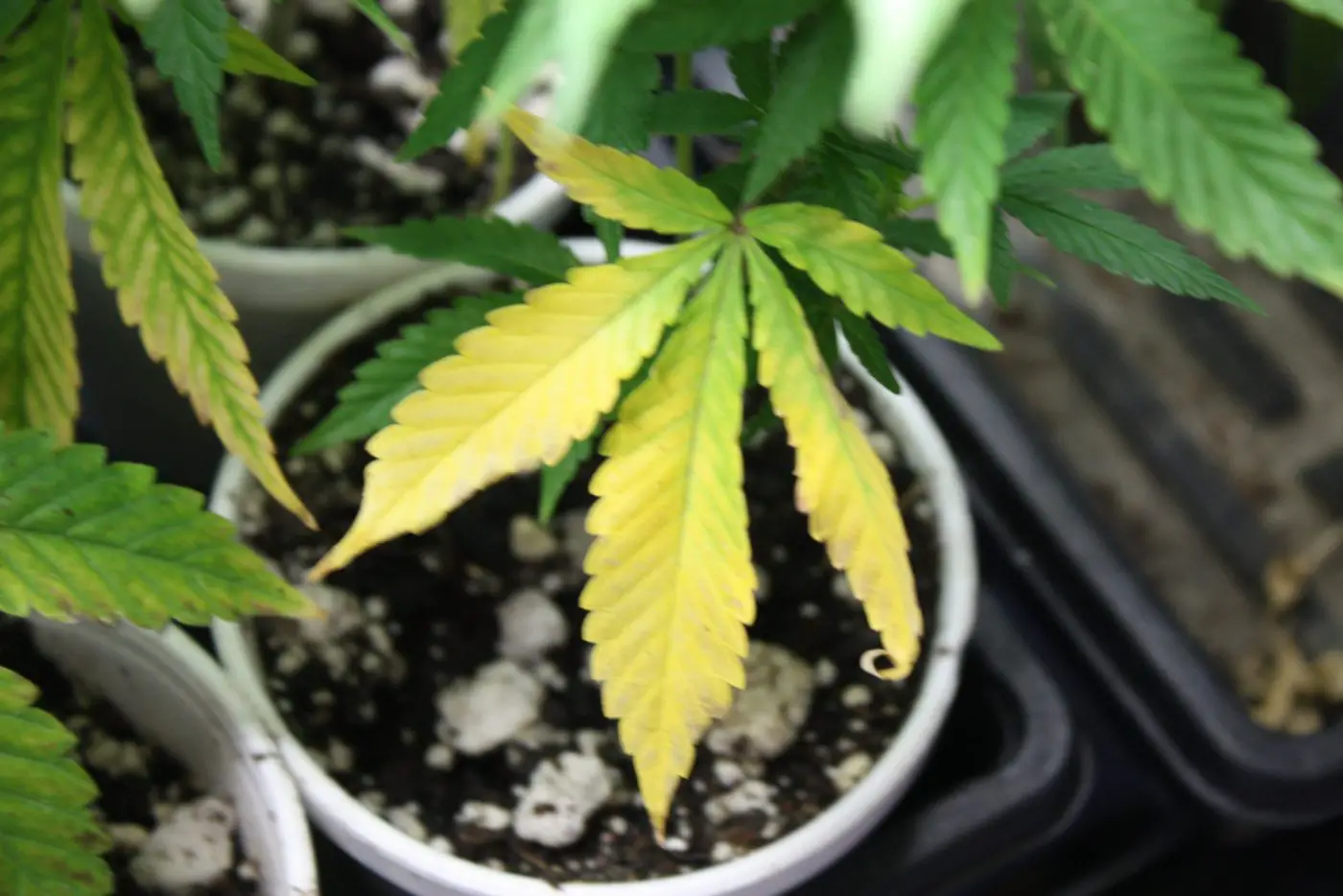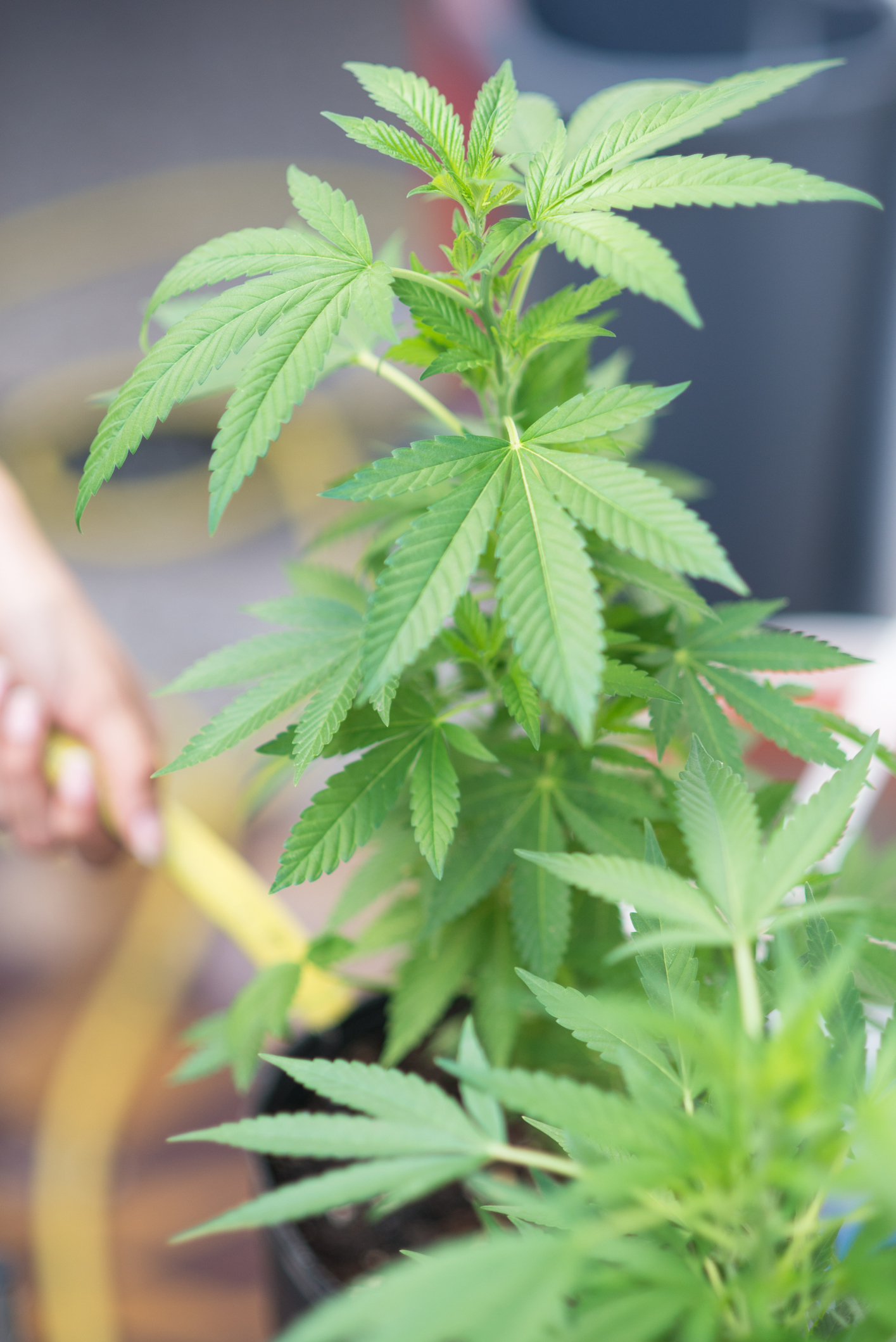Cannabis plants communicate their needs through visual cues. When fan leaves begin yellowing, curling, or dying during the flowering stage, your plants are sending important signals about their health and growing conditions. Understanding these signals can mean the difference between a mediocre harvest and a bountiful one.
While some leaf senescence is normal during flowering, excessive or premature leaf death indicates underlying issues that require attention. This guide explores the biological processes behind fan leaf deterioration and provides actionable solutions to optimize your cannabis flowering cycle.

Table of Contents
Natural Leaf Senescence vs Problematic Decline
First, it’s important to distinguish between natural processes and actual problems. Cannabis plants naturally redirect energy from vegetative growth to flower production during blooming. This biological shift often results in lower fan leaves yellowing and eventually falling off as the plant mobilizes nutrients toward bud development.
Normal senescence typically begins with the oldest, lowest leaves and progresses slowly upward. This gradual yellowing represents the plant’s strategic reallocation of mobile nutrients like nitrogen from leaves to developing flowers.
However, when leaf deterioration occurs rapidly, affects multiple leaf layers simultaneously, or begins in the middle or top of the plant, you’re likely dealing with a cultivation issue requiring intervention.
Common Causes of Premature Fan Leaf Death
Nutrient Imbalances
Nutrient deficiencies or toxicities represent the most common culprits behind abnormal leaf death during flowering. Cannabis requires a specific nutrient profile during bloom that differs significantly from its vegetative needs.
Nitrogen deficiency manifests as yellowing that begins at the bottom leaves and moves upward. While some nitrogen reduction is expected during flowering, excessive yellowing indicates the plant cannot access sufficient nitrogen for basic metabolic functions.
Phosphorus deficiency appears as dark purple or red discoloration along leaf veins, often with bronzing and eventual necrosis. Cannabis demands significant phosphorus during flowering, making this deficiency particularly problematic during bloom.
Potassium deficiency presents as yellowing or browning leaf margins that eventually curl and become necrotic. Since potassium regulates water movement and carbohydrate production, deficiency severely impacts flower development.
Calcium deficiency creates distorted new growth with hooked tips and rusty brown spots between veins. Magnesium deficiency appears as interveinal chlorosis, where leaf tissue yellows while veins remain green.

Source: Wikimedia Commons
Improper pH Levels
Cannabis plants can only absorb nutrients effectively within specific pH ranges. In soil, the ideal pH range spans 6.0-7.0, while hydroponic systems perform best between 5.5-6.5. When pH drifts outside these ranges, nutrient lockout occurs, creating deficiencies even when nutrients are physically present in the growing medium.
Regular pH monitoring becomes especially critical during flowering when plants undergo rapid nutrient uptake changes. Fluctuating pH levels can trigger cascading nutritional problems that manifest as dying fan leaves.
Light Stress
Excessive light intensity or duration can damage fan leaves during flowering. Cannabis plants in bloom become increasingly sensitive to photoperiod disruptions and light burn. Symptoms include upward leaf curling, bleaching, and crispy leaf edges that eventually die back.
Plants positioned too close to high-intensity lighting often develop light stress symptoms first in their uppermost foliage. This contrasts with nutrient issues that typically begin in lower leaves.
Water Management Issues
Both overwatering and underwatering stress cannabis plants and accelerate leaf death during flowering. Overwatering creates oxygen-deprived root zones, leading to drooping leaves that eventually yellow and die. Underwatering causes wilting, crispy leaf margins, and premature senescence as plants cannot transport nutrients effectively.
The flowering stage often requires adjusted watering schedules as plant metabolism and transpiration rates change. Failure to adapt watering practices can trigger fan leaf decline.

Environmental Stress
Temperature and humidity imbalances significantly impact leaf health during flowering. High temperatures (above 85°F/29°C) increase transpiration rates and can cause rapid leaf death if plants cannot uptake water fast enough. Low humidity accelerates this process.
Conversely, high humidity during late flowering increases the risk of fungal pathogens that attack leaves. Poor air circulation compounds these environmental stressors, creating microclimates where leaf diseases flourish.
Diagnostic Approach
Accurate diagnosis requires systematic observation. Begin by examining the pattern of leaf deterioration. Note which leaves show symptoms first and how the issue progresses through the plant. Photograph affected leaves and compare against reference materials.
Test your growing medium’s pH and electrical conductivity (EC) to identify potential nutrient lockout situations. Examine your runoff values as well, as they often reveal accumulation issues not apparent in input measurements.
Review your recent feeding schedule, lighting adjustments, and environmental conditions. Many leaf issues develop days after the initial stress occurs, making historical data valuable for diagnosis.
Strategic Solutions
Nutrient Corrections
For nitrogen deficiency during early flowering, apply a bloom-specific fertilizer with slightly higher nitrogen than standard bloom formulations. For mid to late flowering, some yellowing is acceptable and even beneficial for flavor development.
Address phosphorus deficiency with bloom-specific nutrients high in phosphorus. Supplement potassium deficiencies with potassium silicate or sulfate of potash. Correct calcium and magnesium issues with Cal-Mag supplements formulated for cannabis.
Always introduce nutrient changes gradually, starting at half the recommended strength to prevent shock or toxicity.
pH Management
Stabilize pH by using pH buffers in your nutrient solution. If growing in soil, consider a soil drench with properly pH-adjusted water to reset the root zone environment. Hydroponic growers should monitor pH daily during flowering and adjust as needed.
Implement a complete reservoir change if pH instability persists, as nutrient salt buildup often causes ongoing pH fluctuations.
Light Adjustments
Increase the distance between lights and canopy if light stress appears. For LED fixtures, 18-24 inches typically provides adequate intensity without burning. HID lighting may require 24-30 inches of clearance depending on wattage.
Consider introducing light stress training techniques earlier in the growth cycle to create more even canopies that distribute light exposure more uniformly.
Water Management Refinement
Develop a consistent watering schedule based on container weight rather than time intervals. Flowering cannabis typically requires watering when the growing medium has dried to approximately 1 inch depth for soil or when fabric pots feel noticeably lighter.
Ensure proper drainage and consider using moisture meters for more precise monitoring in larger operations.
Environmental Control
Maintain flowering temperatures between 70-80°F (21-27°C) during lights-on periods and allow a 10°F drop during dark periods to stimulate resin production without stressing plants.
Gradually reduce humidity as flowering progresses, starting around 50-60% in early flower and decreasing to 40-45% during late flowering to prevent mold while maintaining healthy transpiration rates.
Preventative Practices
Implement a transition feeding schedule when shifting from vegetative to flowering stages. This gradual nutrient adjustment prevents shock and supports healthier leaf maintenance throughout flowering.
Install environmental monitoring systems that track temperature, humidity, and VPD (Vapor Pressure Deficit) to identify potential stress conditions before they damage leaves.
Practice regular leaf inspection, focusing on new growth and middle-canopy leaves where early signs of deficiencies often appear before becoming widespread.
Some leaf loss during flowering remains inevitable and even beneficial. The key is distinguishing between natural senescence and problematic conditions that require intervention. By understanding the biological processes behind fan leaf changes and implementing targeted solutions, you can maintain healthier plants through flowering and maximize your harvest potential.

